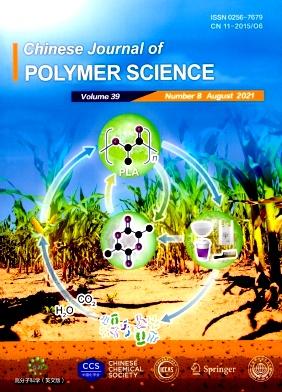Swelling, Interfacial Behavior, and Rheology of Soft Core-Shell Microgels Introducing Acid Isomer for pH–Temperature Dual-responsiveness
Abstract
In this study, a pair of dicarboxylic acids as cis-trans isomerism—citraconic acid (CA) and mesaconic acid (MA), was incorporated into polymeric networks of poly(N-isopropylacrylamide) (PNIPAM)-based core-shell microgels via semi-batch precipitation polymerization. We demonstrated that the pH-temperature dual responsiveness of the core-shell microgels is highly correlated with the structure and position of the acid isomers. Both the cis-trans molecular structure and the crosslinking position of the dicarboxylic acids significantly influenced the hydration capacity and surface charge density of the core-shell microgels. These diverse properties first influenced the swelling behavior, further affecting the interfacial behavior of the microgels, including the oil-water dynamic interfacial tension and air-water compression isotherms. Furthermore, the rheological behavior of the microgel suspensions also displayed distinct dependences on the frequency and temperature, illustrating that the cis-trans molecular structure and crosslinked position of the dicarboxylic acids also significantly influenced the interparticle clustering in the bulk solution. Our results suggest that the pH sensitivity of the cis-trans dicarboxylic acid isomer affects the ionization and surface charge distribution of the core or shell layers of individual microgels, which further determines the interparticle interaction and cooperative rearrangement at interfaces and in the bulk.

 求助内容:
求助内容: 应助结果提醒方式:
应助结果提醒方式:


